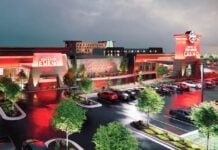by Andrew Cardno
The core of your gaming operation is how data flows between systems, and the flow of this data to your frontline team members. Ten years ago, it was enough to build a data warehouse that captured data into a central place from your gaming system; but to be successful today, you need a modern enterprise architecture.
In a modern entertainment facility, customers expect a coordinated, seamless response for the entirety of their visit. Each area of your business should create synergistic customer interactions and allow for a coordinated response so guests feel you are both consistent and efficient in delivering their experience.
In today’s world, employees have choices about where they work and the modern workforce expects efficient tooling. Consider a casino host who is expected to manage a book of 500 players while being expected to dance between eight different applications containing all of the information they need to have a meaningful discussion with the guest. Quite simply, casinos ask hosts to be computer wizards, as well as tackling the demanding job of delivering revenue from a large book of players.
To achieve this seamless integration of different areas of the business data, plumbing is required. This data plumbing describes the connections between systems, storage, networks, and how this data makes its way to the end users. These end users can be team members or customers interacting directly with the data enriched entertainment experience.
The challenge is that without careful design, data plumbing issues can result in huge bottlenecks or cause interconnected systems to lag in their response times. In considering data plumbing, there are very different data flows to examine.
Fast data flows enable customers and team members to respond in seconds to specific events. These events range from jackpots on gaming machines to high value guests arriving in the parking garage.
Slow aggregation data is large in both complexity and depth. It is used to calculate long term trends and to build forecast models for future business.
Interaction data flows are generated as customers and team members do things both internally and externally. It can range from ordering food for in-room dining to posting a Facebook message.
The relationship to storage and your data-lake is important as different data flows move into storage and become part of the ongoing data collection, or lake, of data. This data can be ‘hot data’ where immediate action is required, or ‘cold data’ where it is used for tasks like modeling and analytics.
Having correct data flows enable massive improvements in efficiency and processes across an organization. They also provide for tremendous value generation with customers as they can enjoy a seamless experience across the whole entertainment facility. Consider the example of a receptionist in a hotel who is able to interact with customers and seamlessly book them into rooms or restaurants or arrange for the right kind of gaming experience the customer desires. It is the interaction of data flows that enable this kind of seamless gaming experience.
It is unexpected and impossible to predict if it will last, but with growth of approximately 30% over 2019, the industry is experiencing demands that challenge every aspect of the business. In this unforeseen age of growth, all areas of the business become stressed and some will break under the load – everything from a car parking facility to the cleaning of bathrooms requires special attention and potentially a change in how they are managed. Data is the lifeblood – enabling you to make critical changes to maintain brand equity while adapting to this new reality. Consider these questions: What happens if your growth curve continues into 2022? How will you handle the growth and what areas of your operation will become bottlenecks? How will you put new workflows in place to handle these bottlenecks?
When a property’s data is properly structured, it is well positioned to meet these changes and the organization can adapt efficiently and effectively to a new and changed business reality. The following are five important steps to take:
• Collect and gather your data to understand your plumbing requirements.
• Document your systems’ infrastructure and determine overall architectures.
• Prepare your data and infrastructure for advanced AI and analytics.
• Train your team members in data flows and usage.
• Plug in tools that can leverage the data plumbing.
Just as good plumbing is an essential part of building a great physical facility, good data plumbing is now just as important and will form the basis of how your team members and guests can interact in an effective way across your entire operation, in whatever unexpected future state you find your business.
Andrew Cardno is Co-Founder and Chief Technology Officer of Quick Custom Intelligence (QCI). He can be reached by calling (858) 299-5715 or email acardno@quickcustomintelligence.com.
















































